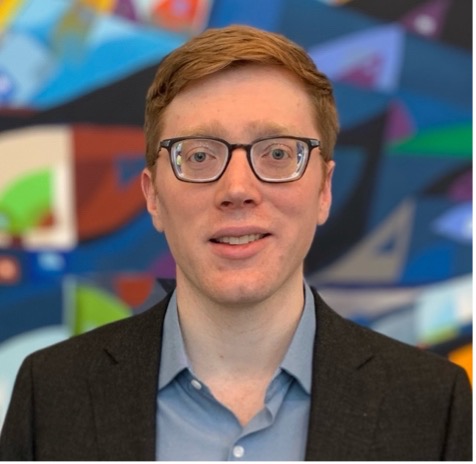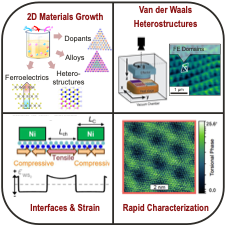Andrew J. Mannix

Assistant Professor
Department of Materials Science and Engineering
Stanford University
Date: October 21, 2024
Time: 3:00 - 4:00 PM ET
Location: Building 34, Room 401 (Grier Room)
Reception to follow
Join via Zoom: mit.zoom.us/j/99877021156
Abstract
Atomically thin van der Waals materials offer precise control over composition, symmetry, moiré superlattices, and interfacial coupling, but scaling these innovations for practical applications remains challenging. In this talk, Mannix will present his development of versatile synthesis and characterization techniques to advance the growth and device fabrication of 2D semiconductors and their heterostructures.
 Optimizing the growth of transition metal dichalcogenides (TMDCs) like MoS₂ and WSe₂ is crucial for creating devices that can surpass silicon CMOS and enable scalable photonics. Mannix's group developed a hybrid metal-organic chemical vapor deposition (HyMOCVD) process for precise compositional control, enabling tunable WS₂ growth via doping, alloying, and selection of growth promoting additives. By adjusting growth kinetics, they achieved polytype-selective growth of ferroelectric 3R-phase TMDCs, opening avenues for ferroelectric devices and nonlinear optics.
Optimizing the growth of transition metal dichalcogenides (TMDCs) like MoS₂ and WSe₂ is crucial for creating devices that can surpass silicon CMOS and enable scalable photonics. Mannix's group developed a hybrid metal-organic chemical vapor deposition (HyMOCVD) process for precise compositional control, enabling tunable WS₂ growth via doping, alloying, and selection of growth promoting additives. By adjusting growth kinetics, they achieved polytype-selective growth of ferroelectric 3R-phase TMDCs, opening avenues for ferroelectric devices and nonlinear optics.
Improving electrical contacts to 2D semiconductors is another critical challenge. Evidently, Ni forms effective contacts with n-type WS₂ despite its suboptimal work function. They observe that the mechanical strain from Ni electrode deposition can significantly enhance device performance, with strain effects yielding up to a 2.7× increase in transistor on-state current and a 78% reduction in contact resistance. This effect is widely neglected but shows great potential for further device engineering.
To accelerate material development, they are implementing high-throughput fabrication and characterization tools. Robotic assembly of van der Waals heterostructures under vacuum enables precise control over layer composition and interlayer twist angles. Fast characterization methods like hyperspectral reflectance and torsional force microscopy provide quicker insights, enabling rapid evaluation of material properties and device performance.
Biography
Andrew (Andy) Mannix is an assistant professor of Materials Science and Engineering at Stanford University. He completed his B.S. in Materials Science and Engineering at the University of Illinois at Urbana-Champaign, and his Ph.D. in Materials Science and Engineering at Northwestern University as an NSF GRFP Fellow, where he worked on the growth and atomic-scale characterization of new 2D materials, including borophene.
During his postdoctoral fellowship at the University of Chicago, Mannix developed new methods of atomically-thin nanomaterials growth, processing, and automated heterostructure assembly. His lab at Stanford focuses on advancing the growth, assembly and atomic-scale characterization of 2D materials for new electronic, optoelectronic, and quantum applications.
